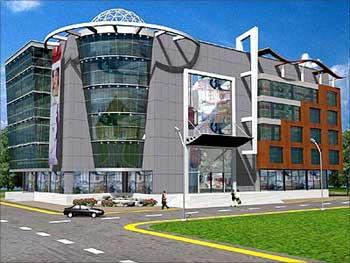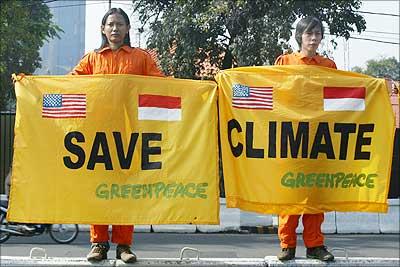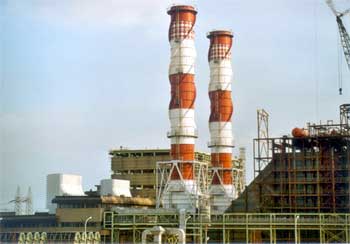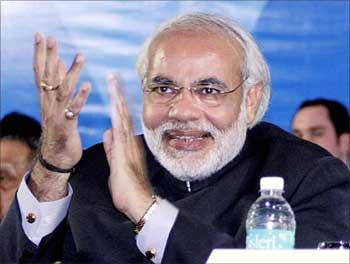 | « Back to article | Print this article |
Power crisis? Let's develop solar cities
That India will put solar energy generation at the forefront of its battle against climate change became evident with Prime Minister Manmohan Singh releasing the National Action Plan on Climate Change in New Delhi last year.
The plan consisted of eight national missions. They are on solar energy, enhanced energy efficiency, sustainable habitat, water conservation, sustaining the Himalayan ecosystem, creating a 'green India' through a large tree-planting programme, sustainable agriculture and establishing a knowledge platform on climate change.
India's plan to combat climate change has been keenly awaited around the world as many industrialised countries have said they will not commit themselves to reducing their greenhouse gas emissions if India and China do not do so.
According to the prime minister, success in developing solar energy 'will change the face of India. It would also enable India to help change the destinies of people around the world. The plan intends to go beyond government to draw upon these assets'.
India's plan to build 'solar cities' evolved from the prime minister's mission to build a 'green India'. Read on . . .
Power crisis? Let's develop solar cities
Plan to develop solar cities announced
Indian government announced recently that it was planning to develop solar cities to reduce about 10 per cent usage of conventional energy sources through renewable energy installations and energy efficiency.
During the 11th Plan period, a total of 60 cities are proposed to be developed as solar cities, based on a model already practised in New York in the United States, Tokyo in Japan, and London in Britain.
Along with these Western countries, India too targets a 10 to 20 per cent carbon emission reduction in the next 10 to 20 years.
India, where most regions enjoy nearly 300 sunny days a year, is an ideal market for solar power companies. However, the high cost of light-to-electricity conversion -- at Rs 12 to Rs 20 per kWh (kilowatt-hour) -- has acted as a deterrent so far.
The government scheme
Under the government's solar city scheme, each of the 60 urban local governments would be provided a total of Rs 50 lakh (Rs 5 million) assistance of which Rs 10 lakh (Rs 1 million) would be for preparation of a master plan, Rs 10 lakh (Rs 1 million) for setting up a solar cell in the city council, Rs 10 lakh (Rs 1 million) for implementation of the plan over five years and the remaining Rs 20 lakh (Rs 2 million) for other promotional activities.
A target of 50 MW has been set for solar power generation during the 11th Plan, which is likely to be achieved. India receives solar energy equivalent to over 5,000 trillion kilowatt hour per year.
Currently, India has about 60 companies assembling and supplying solar photovoltaic systems, nine companies manufacturing solar cells and 19 companies manufacturing photovoltaic modules or panels, according to an Indian Semiconductor Association study.
Power crisis? Let's develop solar cities
Nagpur to be the first solar city
In February 2009, government announced that Nagpur in Maharashtra will be developed as India's first solar city.
Nagpur, the 'Orange City', will become a model solar city by 2012, deriving up to 10 per cent of its energy consumption through renewable energy sources and implementing other energy efficiency measures, a government statement said.
The city can also opt for additional funding from the ministry if the project cost goes beyond the estimates.
Solar energy systems, including street lights, garden lights, traffic lights, hoardings and solar water heaters will be installed in the city. Energy efficient 'green buildings' will be promoted on a large scale.
Power crisis? Let's develop solar cities
What does the ministry have to say
According to New and Renewable Energy Minister Farooq Abdullah, his ministry is implementing a programme on development of solar cities aimed at reducing minimum of 10 per cent of the projected demand of conventional energy of the city through energy efficiency measures and renewable energy installations.
Abdullah had said the centre was providing financial support up to Rs 50 lakh (Rs 5 million) for each solar city to the respective state governments for preparation of a master plan, awareness generation and capacity building activities.
He added that his ministry has been implementing an interest subsidy scheme for many years to provide soft loans to users of solar water heaters through banks and other financial institutions.
The programme also aims at including the proposals for carbon financing.
Power crisis? Let's develop solar cities
Gurgaon and Faridabad to go solar as well
The Haryana government has decided to develop Gurgaon and Faridabad as solar/green cities, State Chief Minister Bhupinder Singh Hooda said recently.
These will be the first cities in Haryana to be brought under the Development of Solar Cities Programme.
The objective was to enable and empower the urban local governments to meet the energy challenges, reduce their dependence on fossil fuel, expensive oil and gas for energy and also to promote increased use of renewable energy, Hooda said.
"The state government would be assisted in preparation of a master plan for increasing energy efficiency and renewable energy supply in these cities besides having in place institutional arrangements for implementation of the master plan," Hooda added.
Financial assistance from the Centre
According to Hooda, the Centre would provide financial assistance of Rs 48 lakh (Rs 4.8 million) each for development of Gurgaon and Faridabad as solar/green cities.
Out of this, Rs 800,000 will be provided for preparation of the master plan, Rs 10 lakh (Rs 1 million) each for setting up the solar cell, its functioning and for implementation over five years while Rs 20 lakh (Rs 2 million) for other promotional activities.
Power crisis? Let's develop solar cities
World's largest solar energy project planned for Gujarat
According to a Business Standard report, the Clinton Foundation is investigating developing what would be by far the world's largest solar energy project in Gujarat.
The project would be an 'integrated solar city' with a capacity of 5 gigawatts.
The world's largest solar power plant is currently in Mojave Desert of California with a capacity that will go up to 900 MW in few years.
Power to cost 70% less
The project, tagged as one of the largest foreign direct investment into Gujarat, will also be a landmark project as the cost of power generation is likely to be 70 per cent less -- about Rs 20,000 crore (Rs 200 billion) -- than the conventional cost of power generation, say sources close to the development.
The project envisages an integrated solar city wherein all the raw materials including glass and panels will be produced by them, bringing down the cost substantially, said a senior government official.
The cost of generation for thermal energy is about Rs 10-11 per unit. However, according to estimates of Clinton Foundation, the power produced in the solar city will cost around Rs 4 per unit, going by the scale of the project and technology advancement they have on hand.
The Gujarat government has roped in the US-based Nobel Laureate John Byrne for charting the state's solar roadmap and is considering Kutch and Banaskantha as favourable locations for the mega project.
At about five times the capacity of a typical coal or nuclear plant, this project would certainly a big step in the right direction towards making solar power a greater part of India's power mix.





